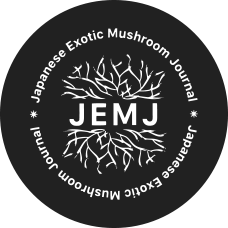Login or Subscribe
You must be logged in to access this content
Subscribe for free access to Japanese Exotic Mushroom Journal and gain insider knowledge on effective cultivation methods for Japanese mushroom species. Elevate your skills with expert tips and innovative technologies to master the art of growing Japanese exotic mushrooms.
◆ Discover exclusive Japanese mushroom cultivation techniques
◆ Learn innovative methods to enhance mushroom quality and yield
◆ Tap into Japan's rich heritage for unique growing insights
◆ Discover exclusive Japanese mushroom cultivation techniques
◆ Learn innovative methods to enhance mushroom quality and yield
◆ Tap into Japan's rich heritage for unique growing insights
Subscribe Now for Free Login
Scaling up can be the wrong decision
Part 1: Why it can be the wrong choice
Many exotic mushroom growers who jumped into the industry in recent years soon feel like they have to scale up, as much as possible and as fast as possible. After a couple of years of good prices and steadily growing demand the impulse is expansion. But bigger is not always more profitable. One big mistake a lot of people make is that they roll-over their current profits when making a business plan. So, if the farm is currently selling shiitake at say, 20 USD per kg (2.2 lbs.) while producing 400 kg a week, in their cost-benefit analysis they simply cross out the 400 kg/week and replace it with it 4,000 kg/week.In truth, the prices will go down. Often drastically. I was curious as to how all of the thousands of small farms in Japan managed to stay in business when mid-sized and even large corporate growers all continually talked my ears off about how they are on the verge of insolvency. That is, until, through the Meet the Grower series I kept going deeper and started seeing a simple common factor: the small family farms made more money off their product per unit than larger producers, so they could operate with less efficiency and without big economies of scale. Smaller growers' higher unit prices are not just a matter of supply driving the price curve down, but also reflect the hidden cost of sales. Because as mushroom farms get bigger they aren’t the only ones benefiting from economies of scale: their buyers are too. It’s one thing to directly sell 400 kg of shiitake a week at some different farmer’s markets and to three local restaurants who know the grower personally, and it’s another to sell 3,000 kg to a supermarket chain or a large food catering company, who will set their own prices and find another supplier if a grower doesn't meet those prices.Not only are buyers setting their price_emdash_but the logistics of storing, transporting and selling large quantities of fresh foodstuffs are a huge burden. That’s why most agricultural operations sell direct to long-term contracts (like a tomato farmer with Heinz ketchup for instance), or to wholesalers who handle the logistics and sales. When using a broker or wholesaler, prices will fall further, because the process is essentially being outsourced to another firm, which must then find buyers and sell in bulk.The imaginary farm I am discussing could see its per unit price fall by up to 50%. In the big picture revenues would still go up, 20 times 400 is 8,000 USD/week while 10 times 4,000 is 40,000 USD/week. However, if the expenses for expansion were planned assuming 80,000 USD/week in revenue, then running profits and financial stability can get dicey very easily. Other expenses, such as for substrate, can also very easily increase, rather than decrease, after expansion, which is counterintuitive. For instance, the imaginary grower in this case study was picking up all their substrate from a company down the road that produced wood chip mulch for gardens and had about 2,000~3,000 kg of fine sawdust waste left over each week that the grower could go pick up for free. Now the grower finds themselves having to buy sawdust from commercial sources to support the additional production.Bigger isn't always better. It's always worth moving forward with caution. Bigger often brings bigger problems. It helps to include substantial leeway and take a pessimistic view of profits and revenues when planning if an expansion makes sense. Anyone can make a filet mignon taste good and the same is true for businesses that have ideal market conditions. A grower needs to know that they have enough of a margin built that they can remain profitable.
I will get into when and why big expansions do make sense in the next series.





 1-2-13 Honmachi, Komoro city, Nagano prefecture, Japan 384-0026
1-2-13 Honmachi, Komoro city, Nagano prefecture, Japan 384-0026